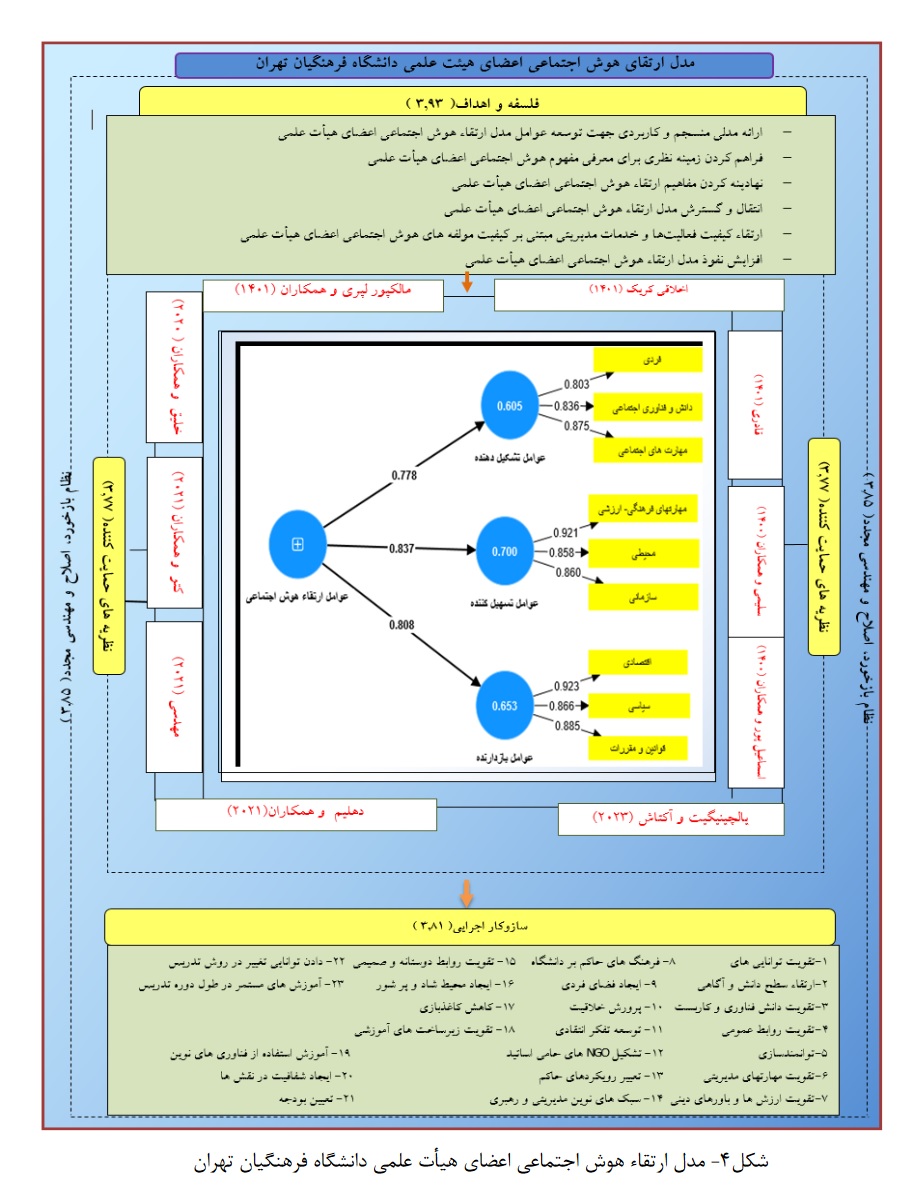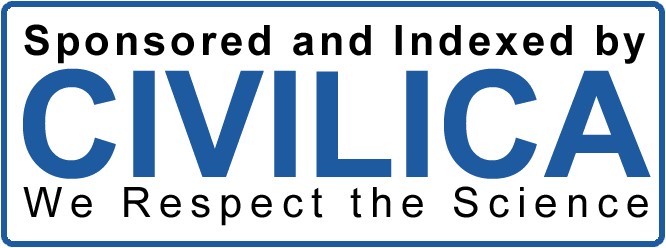Proposing a Model to Enhance Social Intelligence among Faculty Members of Farhangian University in Tehran
Keywords:
Intelligence, social intelligence, faculty members, Farhangian UniversityAbstract
The primary aim of this article is to propose a model for enhancing social intelligence among faculty members of Farhangian University in Tehran. The research method employed is a mixed-method approach (qualitative-quantitative). In addition to documentary studies, the technique of thematic analysis using MAXQDA12 software was utilized to identify the dimensions and components. The statistical population in this research includes all experts in educational management, cultural management, human resource management, as well as experts in social psychology. Theoretical saturation was reached after conducting 20 interviews, each lasting between 75 to 120 minutes. In the end, basic, organizing, and overarching themes were extracted. In the quantitative section, to determine the current status and the contribution of dimensions and components, a developmental method using structural equation modeling (PLS software) was employed. Based on the semi-structured interviews, 55 indicators, 9 components, and 3 dimensions were identified for constitutive factors; 3 dimensions, 7 components, and 42 indicators for facilitating factors; and 3 dimensions, 6 components, and 17 indicators for inhibitory factors for enhancing social intelligence among the faculty members of Farhangian University in Tehran. According to the coefficients obtained from the structural equation modeling, the facilitating factors ranked first with a coefficient of 0.837, inhibitory factors ranked second with a coefficient of 0.808, and constitutive factors ranked third with a coefficient of 0.778. Finally, through internal validation using four dimensions (philosophy and objectives, theoretical foundations, evaluation system, executive mechanism), the model was confirmed by experts.
Downloads
References
Gottfredson LS. Where and why g matters: Not a mystery. Human Performance. 2022;15(1):24-46. doi:
https://doi.org/10.1207/S15327043HUP1501&02_03.
Eini Pour J, Aghaei A, Rezazadeh A. Predicting Attitude Towards Responsibility Based on Sense of Coherence and
Social Intelligence (Case Study: Police Commanders in Counties). Knowledge and Research in Applied Psychology.
;22(3):97-106.
Moran S, Kornhaber M, Gardner H. Orchestrating multiple intelligence. Journal of Educational Leadership.
;64(1):22-7.
Riggio RE, Reichard RJ. The emotional and social intelligences of effective leadership. Journal of Managerial
Psychology. 2018;23(2):169-85. doi: https://doi.org/10.1108/02683940810850808.
Wallenius M, Punamaki RL, Rimpela A. Digital Game Playing and Direct and Indirect Aggression in Early
Adolescence: The Roles of Age, Social intelligence, and Parent-Child Communication. Journal of Youth Adolescence.
;36(3):325-36. doi: https://doi.org/10.1007/s10964-006-9151-5.
Buzan T. The power of social intelligence. New York, NY: Perfect Pound Publisher; 2012. 127-39 p.
Esmaeilpour H, Bazavind Z, Rastgar A. The Mediating Role of Social Intelligence in the Relationship between
Knowledge Management and Organizational Wisdom in Employees of Payam Noor Universities in Fars Province. Journal of
Applied Educational Leadership. 2021;2(1):65-76. doi: https://doi.org/10.61838/kman.ijimob.2.1.3.
Zargoush S, Gheisaribeigi Z, Zargoush F, Mirzaei M. Investigating the Impact of Social Intelligence on the Academic
Achievement of Students. Modern Advances in Psychology. 2020;33(2):78-87.
Miłkowski M. Social intelligence: How to integrate research? A mechanistic perspective. AI & SOCIETY.
;34(4):735-44. doi: https://doi.org/10.1007/s00146-017-0787-3.
Ahmadi Zadeh Shahrebabaki M, Safidgari S, Abdi A. Comparison of Social Intelligence and Religious Orientation
among Gifted and Regular Female High School Students in Karaj. Journal of Psychological and Educational Studies.
(3):64-71.
Björkqvist K, Österman K, Kaukiainen A. Social intelligence−Empathy= aggression? Aggression and Violent
Behavior. 2020;5(2):191-200. doi: https://doi.org/10.1016/S1359-1789(98)00029-9.
Mohammadi Pouya F, Qarloghi S, Mohammadi Pouya S, Gharib Tazra S. Investigating the Relationship Between
Social Intelligence and Graduate Students' Perception of Classroom Structure and the Mediating Role of Self-Efficacy Beliefs.
Scientific Research Bimonthly on Educational Strategies in Medical Sciences. 2018;11(4):1-8.
George A, Jayanthi NLN. A Study on Social Intelligence of High School Students. Journal of the Gujarat Research
Society. 2019;21(14):36-9.
Haji Aghanajad Y, Zare Nistank M, Dadashi M. The Relationship Between Creativity and Social Intelligence in
Students of Allameh Tabataba'i University and Shahid Beheshti University. Military Care Sciences. 2019;6(1):68-1. doi:
https://doi.org/10.29252/mcs.6.1.61.
Promsri C. The Effects of Social Intelligence on Workplace Spirituality. Journal of Advances in Social Science and
Humanities. 2019;5(5):755-62.
Mohadesi E. An examination of the relationship between social intelligence and organisational commitment among
the school managers of Kashmar and Khalilabad. Global Journal of Guidance and Counseling in Schools: Current Perspectives.
;11(2):98-109. doi: https://doi.org/10.18844/gjgc.v11i2.5705.
Crowne KA. The relationship among social intelligence, emotional intelligence and cultural intelligence. Journal of
Organization Management. 2019;6(3):148-63. doi: https://doi.org/10.1057/omj.2009.20.

Downloads
Published
Submitted
Revised
Accepted
Issue
Section
License
Copyright (c) 2024 Journal of Study and Innovation in Education and Development

This work is licensed under a Creative Commons Attribution-NonCommercial 4.0 International License.










